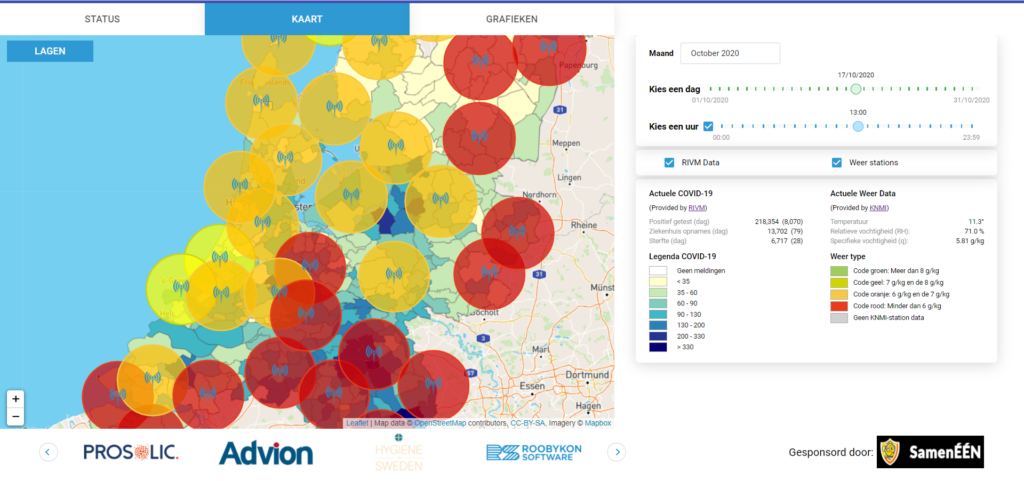Research and Coronaweer.nl

On march 2020 I started doing research, together with various scientists from two universities, to investigate a possible correlation between humidity and the spread of respiratory viruses; Influenza (the flu) and SARS-CoV-2 (COVID-19).
I designed and architected a cloud-based platform that collected data in-realtime from 37 weather stations of the KNMI (Dutch National Weather Service), automatically converted the relative humidity into specific humidity, and integrated daily COVID-19 related data from RIVM (The National Institute for Public Health and the Environment) while also integrating data population data from CBS (The National Statistical office). All the data was integrated autonomously, using various API calls.
The relationship between specific humidity and influenza/SARS-CoV-2 in the Netherlands was evaluated over time and at regional level. Parametric and non-parametric correlation coefficients were calculated to quantify the relationship between humidity and influenza, using five years of weekly data from Nivel.
Bayesian spatio-temporal models-with a Poisson and a Gaussian likelihood- were estimated to find the relationship between regional humidity and the daily cases of SARS-CoV-2 in the municipalities and provinces of the Netherlands. We observed an inverse (negative) relationship between specific humidity and the incidence of influenza between 2015 and 2019.
Our space-time analysis indicated that an increase of specific humidity of one gram of water vapor per kilogram of air (1 g/kg) is related to a reduction of approximately 5% in the risk of COVID-19 infections.
Conclusion: The increase in humidity during the outbreak of the SARS-CoV-2 in the Netherlands helped to reduce the risk of regional COVID-19 infections.
Public policies that promote higher levels of specific humidification-above 6 g/Kg-can lead to significant reductions in the spread of respiratory viruses, such as influenza and SARS-CoV-2. We published our paper online. You can review it here.
I then designed a user-interface on top of the system to provide Dutch citizens insight into the risk in their local municipalities. The UI is designed based on the conclusions from our research. As a result people can view the system to decide whether or not to wear a mask and go out to a social gathering.